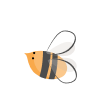- 3 months ago
Complementary Feeding Strategies for Infants with Cow’s Milk Allergy
What Is Cow’s Milk Protein Allergy (CMPA)?
CMPA occurs when the immune system reacts abnormally to proteins in cow’s milk, particularly casein and beta-lactoglobulin. Common symptoms include:
- Skin reactions: rashes, eczema, hives
- Digestive symptoms: vomiting, diarrhea, mucousy stools
- Gas, colic, irritability
- Respiratory issues: wheezing, nasal congestion
- Rarely, anaphylaxis
Diagnosis is made by a pediatric allergist, and feeding strategies must be tailored under medical supervision.
When to Start Complementary Feeding in CMPA?
- Ideally at 6 months of age, or earlier (4 months) if advised by a doctor due to growth concerns
- Delaying or introducing solids too early may increase allergy risks
- If breastfeeding, it should be continued throughout the weaning process
Main Goals of the Feeding Strategy
- Start with strictly non-dairy foods
- Introduce one new food at a time, spaced every 3–5 days
- Monitor for allergic reactions after each new food
- Ensure nutritional adequacy—energy, protein, iron, calcium, and healthy fats
- Maintain a food and symptom diary
Safe First Foods (Milk-Free)
|
Category |
Examples |
|
Vegetables |
Carrot, zucchini, potato, broccoli |
|
Fruits |
Apple, pear, banana, avocado |
|
Grains |
Rice cereal, gluten-free oats, quinoa |
|
Proteins |
Egg yolk (if low allergy risk), lentils, chickpeas, chicken |
|
Fats |
Olive oil, coconut oil |
|
Milk alternatives |
Breast milk, hypoallergenic or amino acid-based formula* |
* Plant-based milks (almond, soy, oat) are not suitable under 1 year of age
Foods to Avoid Strictly
- Cow’s milk, yogurt, cheese, butter
- Processed or packaged foods with hidden milk content
- Labels listing: casein, whey, milk solids, sodium caseinate
- Terms like “non-dairy” may still contain milk protein—read ingredients carefully
Introducing High-Allergy Risk Foods
Babies with CMPA may have a higher risk for other food allergies. Introduce allergenic foods with caution:
- Egg: Start with yolk around 7–8 months, avoid white until 12 months unless approved
- Gluten: Introduce small amounts around 6 months
- Fish: Around 8–10 months, ensure it is fully cooked
- Nuts: Not whole; only as powder or paste, and only after medical clearance
Sample Dairy-Free Daily Menu (for 8-Month-Old Baby)
Breakfast
- Oatmeal with apple puree + olive oil
- Breast milk or allergy-friendly formula
Lunch
- Pureed zucchini, potato, and carrot
- Mashed chicken breast
- 1 tsp olive oil
Snack
- Mashed avocado + grated pear
Dinner
- Lentil soup (no dairy or wheat)
- Rice porridge
- Breast milk
Common Mistakes to Avoid
- Thinking “butter is not real milk” — it contains milk protein
- Introducing too many new foods at once
- Ignoring mild symptoms (they can indicate sensitivity)
- Not reading labels of crackers, cookies, or cereals
- Allowing caregivers to feed the baby without allergy instructions













